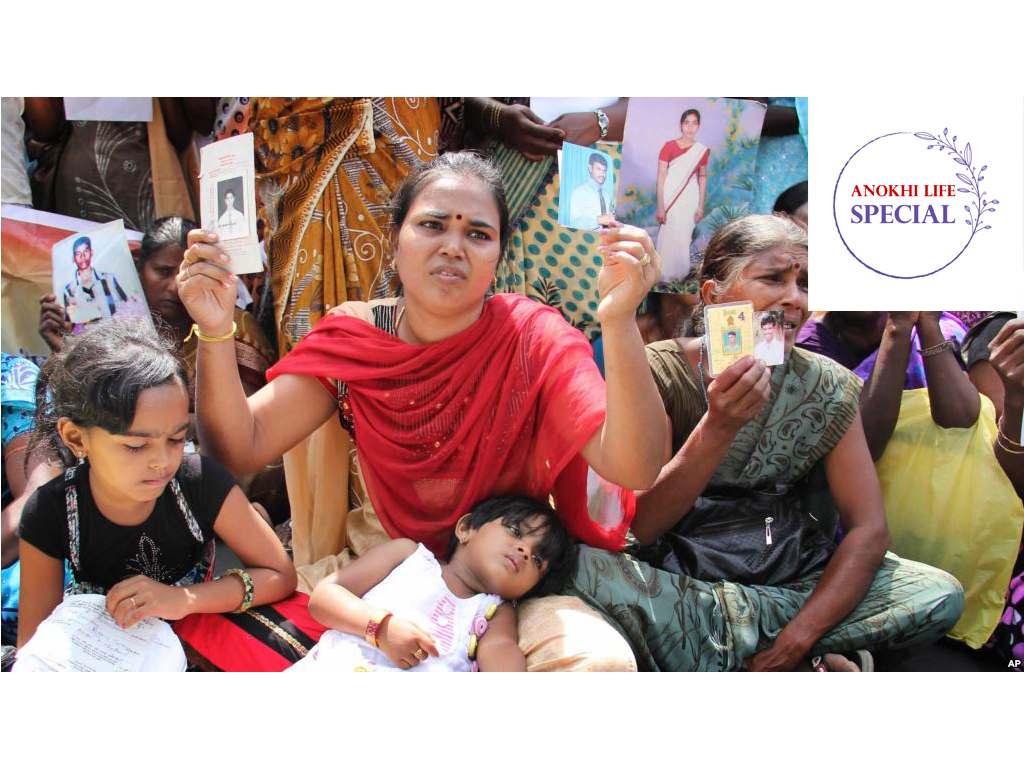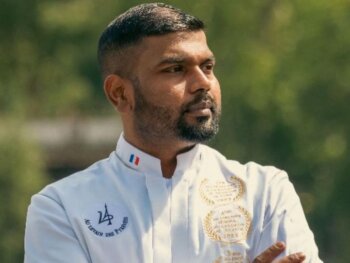We continue our 3-part series in the spirit of World Day Of Social Justice. In this second instalment, we take a closer look at the disturbing decades-old trend of people who have gone missing in Sri Lanka. According to Amnesty International, “Sri Lanka has one of the world’s highest number of enforced disappearances, with a backlog of between 60,000 and 100,000 disappearances since the late 1980s. The authorities have also failed to protect witnesses and families seeking truth and justice, and failed to prosecute those suspected of criminal responsibility.” We take a closer look at these enforced disappearances.
Read our report on the blasphemy laws in Pakistan.
Read our report asking if PM Modi is turning a blind eye towards human rights issues with Muslims and farmers.
While many folks celebrated Valentine’s Day around the world, in Sri Lanka, February 14 is a more sombre affair. According to Amnesty International, this date is known as Missing Lovers Day, which acknowledges those with loved ones who have gone missing by way of enforced disappearances and continues the fight for “… truth and justice.”
Let’s Talk About The History Of Enforced Or Involuntary Disappearances In Sri Lanka:
Unfortunately, enforced or involuntary disappearances are all too common in Sri Lanka.
In fact, according to the Tamil Guardian, “an annual report by the United Nations Working Group on Enforced or Involuntary Disappearances reveals that Sri Lanka continues to have the second-highest number of enforced disappearances in the world.” There have been approximately “60,000 and 100,000 disappearances since the late 1980s” in Sri Lanka, reports Amnesty International.
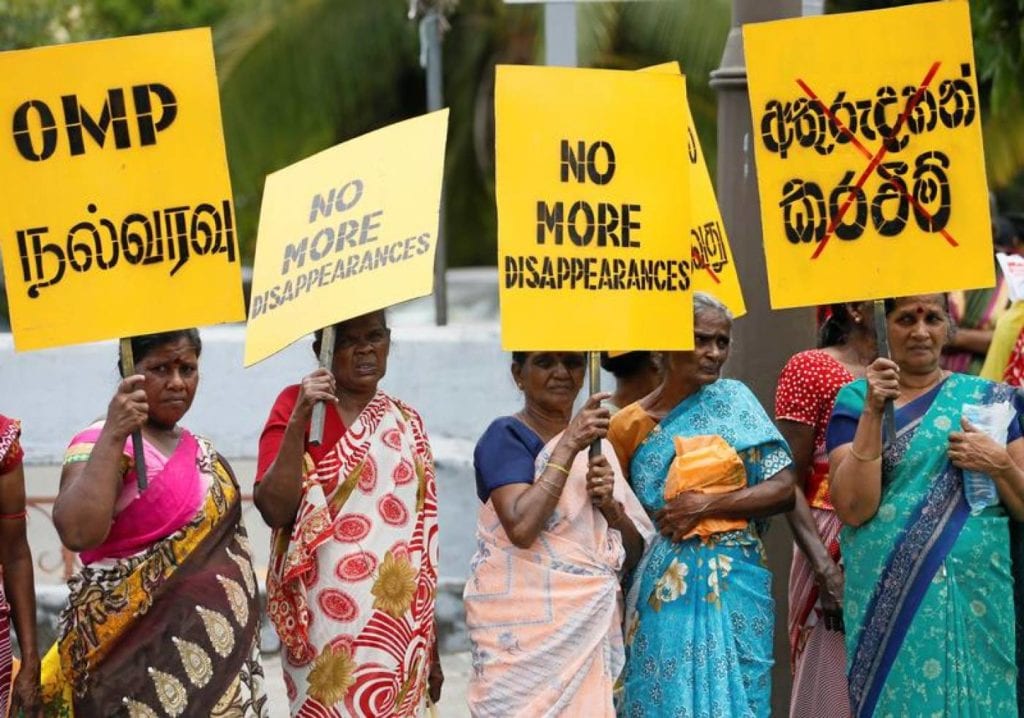
Amnesty International outlines the various events that have contributed to the staggering amount of disappearances, which includes the following:
- “Sinhalese young people suspected of affiliation with the leftist Janatha Vimukthi Peramuna (JVP) were killed or forcibly disappeared by government-operated death squads in 1989 and 1990.
- Tamils suspected of links to the Liberation Tigers of Tamil Eelam (LTTE) were forcibly disappeared by police, military and paramilitary operatives during the armed conflict between 1983 and 2009, a pattern that continued for several years after the conflict ended. The LTTE took prisoners and abducted adults and children to serve as fighters; many of them are still missing today.
- More than 100 cadres of LTTE who surrendered to the Sri Lankan army near the end of [the] war in May 2009, have also subsequently disappeared.”
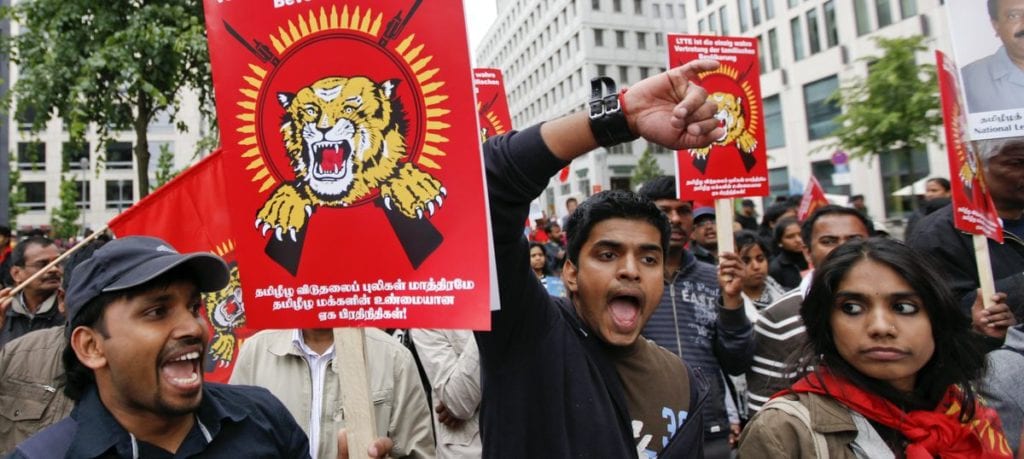
To date, two mass graves have been discovered in Mannar, Sri Lanka in 2014 and 2018, which were said to have contained the bodies of disappeared persons. However, many families have yet to get answers about the disappearances of their loved ones, which is not altogether surprising as the government and police have not shown much initiative to look into instances like these in the past.
That said, according to the United Nations report, “The Working Group” expressed their worries about “…the deteriorating civil society space in Sri Lanka and emphasize[d] that relatives of forcibly disappeared individuals, as well as others such as witnesses and defence counsels, should be protected against any form of intimidation, harassment or ill-treatment, and that the Government has the duty to guarantee the right to form and participate freely in organizations and associations concerned with attempting to establish the circumstances of enforced disappearances and the fate of disappeared persons and to assist victims of enforced disappearances.”
What’s The Sri Lankan Government Doing About These Disappearances?
The short answer is, not enough.
Let me explain why.
Under the previous government, “President Maithripala Sirisena joined a consensus resolution of the UN Human Rights Council. A core commitment was to set up four transitional justice mechanisms to promote “reconciliation, accountability and human rights,” including an accountability mechanism involving international judges, prosecutors, and investigators; a truth and reconciliation mechanism; an office on missing persons; and an office for reparations. Sri Lanka has made limited progress in meeting these commitments, but an Office on Missing Persons and an Office for Reparations have been established,” explains Human Rights Watch.
However, Sri Lanka’s newest governing party, which took over in late 2019 and is headed up by President Gotabaya Rajapaksa, does not intend to honour the previous governments’ commitments. According to Al Jazeera, President Rajapaksa decided to back out “…because of the historic betrayal … in co-sponsoring UN Human Rights Council Resolution 30/1 in 2015 that other countries are able to name members of our armed forces as violators of human rights.”
It is also argued that President Rajapaksa may be against co-sponsoring UN Human Rights Council Resolution 30/1 as he and members of his party were involved in the war crimes that took place in 2009, notes Human Rights Watch.
Nonetheless, President Rajapaksa has been, according to Human Rights Watch, “rapidly putting civilian state agencies under military control, and intelligence agencies are increasing their surveillance and intimidation of victims’ families, human rights activists, and journalists. The government told the council it would create yet another domestic commission of inquiry, but there is a long record of such bodies failing in Sri Lanka.”
As if that’s not enough, President Rajapaksa came forward to explain how his government will be handling the disappearances. “He explained that these missing persons are actually dead… The families of the missing attest to it. However, they do not know what has become of them and so claim them to be missing.”
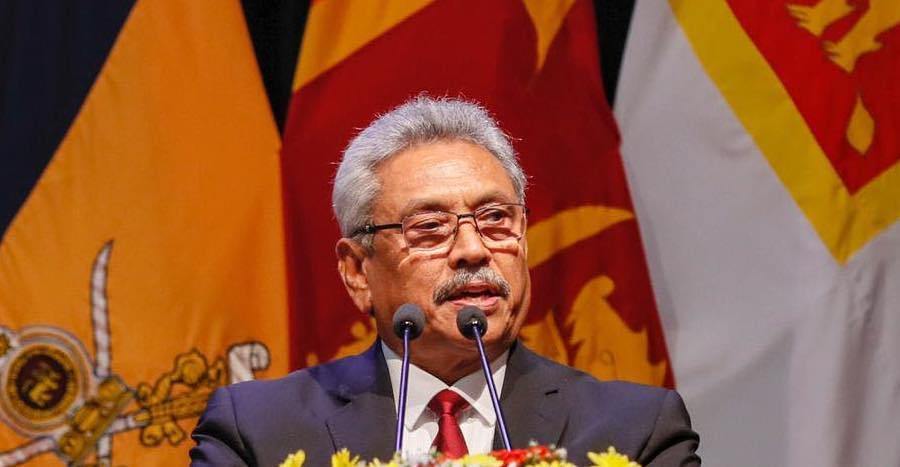
Moving forward, his government intends to “…issue death certificates” for disappeared persons, which would allow “…families… [to] access property deeds, bank accounts or inheritances left by those missing relatives.”
I mean, that’s great and all, but if history is any indicator, nothing may very well come of these domestic ‘investigations,’ especially when the government’s approach is to essentially channel Frozen and tell their people to ‘let it go.’
Make it make sense, is all I’m saying.
WALK FOR JUSTICE:
Sometimes, you just have to take matters into your own hands, which is what David Thomas, the first Tamil-Canadian candidate for Parliament in Canada and former Counsellor in Toronto, and a “…dedicated group of Canadians” did as they completed “…a WALK FOR JUSTICE from Brampton City Hall to Ottawa’s Parliament Hill” in 2020, notes EIN Presswire.
Thomas founded the group on August 15, 2020, and just 15 days later, he and seven other members of the group set off to Ottawa.
The purpose of the walk was twofold:
- Create further awareness about what is going on with enforced or involuntary disappearances in Sri Lanka;
- Deliver a petition. “The petition from Mr. Visuvanathan Rudrakumaran, the Prime Minister of the Transnational Government of Tamil Eelam (TGTE) seeks Canada’s commitment to combating enforced disappearances across the globe. The petition to Mr. Trudeau…reiterates the stated objective of the United Nations in recognizing the 30th of August, as ‘International Day of the Victims of Enforced Disappearances – the objective being that of, “building an international coalition against authoritarian and genocidal states and governments that use enforced disappearances to brutally violate the right to life and suppress democratic voices of dissent.” These lives must be honored with accountability and change in international law,” the petition asserts. Declaring that enforced disappearances have not just been a means of repression, but, “as a tool of Tamil genocide,” explains EIN Presswire.
Approximately 5,000 people showed up and walked with Thomas’s group and signed the petition. The small, but mighty group, has also sparked others to support the cause in “Britain, America, and Sri Lanka where 100,000 people walked for 300 kilometres” Thomas shared with us.
Thomas noted that Prime Minister Trudeau “has been very supportive” and will discuss Canada’s commitment to supporting the enforced disappearances at an upcoming United Nations meeting in March 2021.
Check out this fantastic clip about the Walk For Justice to learn more about the initiative and their journey to Ottawa. Video Credit: www.youtube.com
What’s Needed To Bring Justice For Those Who Have Disappeared?!
The sad truth is that many families will never see their loved ones again.
However, something needs to be done so that these families (who have been through enough, quite frankly) get the closure that they need.
This is where families need the government to back them up, in terms of helping with their efforts to find out what happened to their loved ones. To accomplish this, explains Amnesty International, “the authorities should immediately provide information to the families of the disappeared, with detailed lists and information of persons who surrendered to the armed forces in the final phase of the armed conflict. The authorities should also independently investigate all those suspected of criminal responsibility for the enforced disappearance and bring them into justice in fair trials before ordinary civilian courts.”
Although we recognize that these efforts will not truly ever be enough to replace the lives that have been lost, they would (at the very least) be a step in the right direction that will allow families and the nation, at large, to grieve and start to heal.
Main Image Photo Credit: www.groundviews.org
Devika Goberdhan | Features Editor - Fashion
Author
Devika (@goberdhan.devika) is an MA graduate who specialized in Political Science at York University. Her passion and research throughout her graduate studies pushed her to learn about and unpack hot button issues. Thus, since starting at ANOKHI in 2016, she has written extensively about many challe...


















































